Into the freezer: Cenozoic glaciation

From a climatic perspective, the last of the great geological Eras, the Cenozoic (which started 65 m.y. ago), was a time of global cooling. The cooling was not steady, but was interrupted by warm pulses. The onset of large-scale glaciation about 34 m.y. ago is documented from deep cores drilled into the continental shelves of the Ross Sea and Prydz Bay. The earliest glaciers were accompanied by cool temperate forests, but the climate deteriorated to one represented by tundra, and finally to polar arid conditions. |
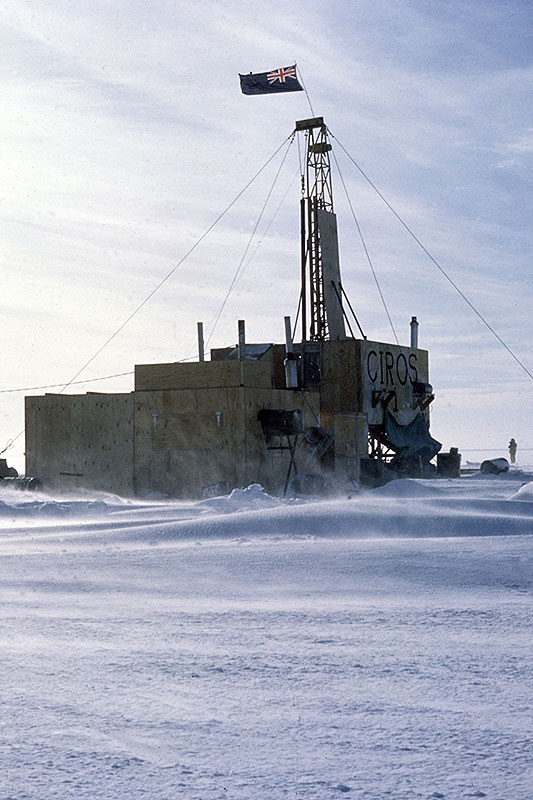 The Cenozoic record of glaciations was the target of New Zealand’s CIROS-1 drillhole (CIROS = Cenozoic Investigations of the Ross Sea) in 1987. Established on the winter4 sea ice in McMurdo Sound, the drilling recovered 702 m of high quality core, extending the then known glacial record to the Eocene/Oligocene boundary at c. 34 Ma. | 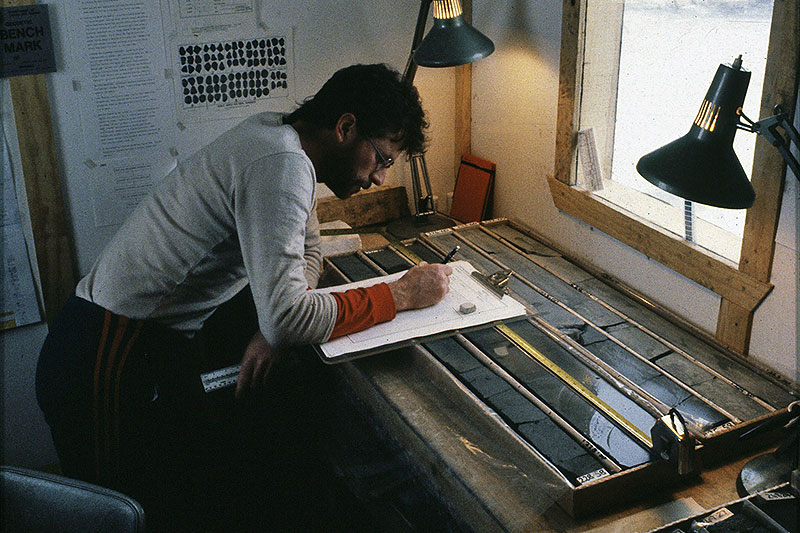 The CIROS-1 core was split in two, and then logged. Here Paul Robinson is logging a sequence of diamictite. | 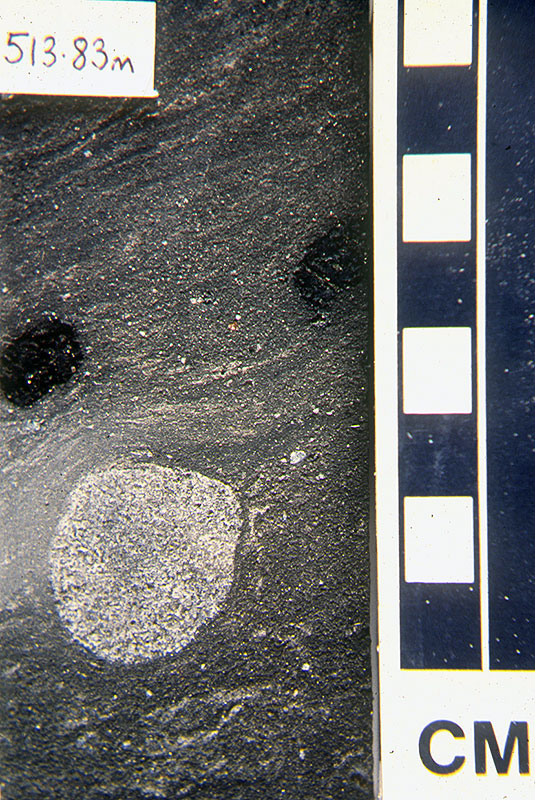 Isolated ice-rafted stones in slumped glaciomarine sediment at a depth of 514m in the CIROS-1 core. | 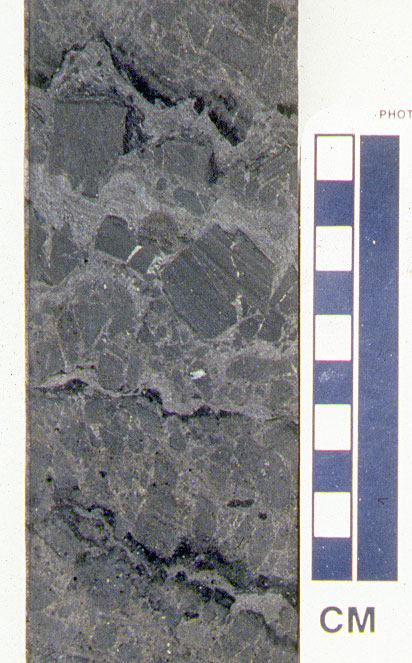 Sedimentary breccia (broken up when sediment was soft), resting from slumping of glaciomarine sediment; at depth of 127 m in the CIROS-1 core. |
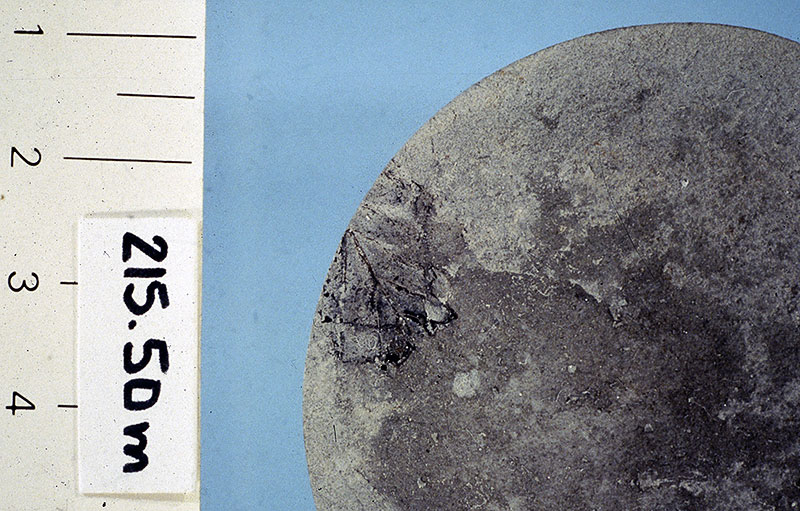 A fortuitous fracture of the CIROS-1 core from a depth 215.5 m revealed (on left side) the outline of a leaf from Nothofagus (southern beech), indicating (along with pollen) the existence of substantial vegetation over the continent in the Neogene Period. | 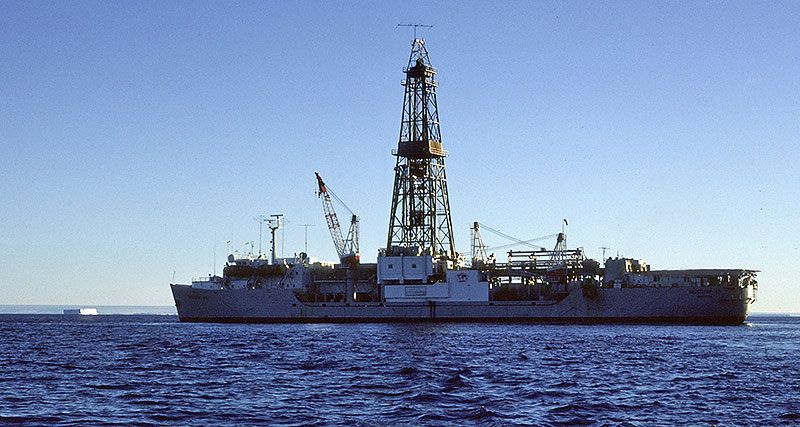 The Ocean Drilling Program (US-led) has also cored the Cenozoic glacial sequence in Antarctica, as here in Prydz Bay in 1988. Although core recovery was poor on the continental shelf, a transect yielded a unique record of changes within the world’s largest glacial system, the Amery Ice Shelf – Lambert Glacier System. Note the East Antarctic Ice Sheet and tabular iceberg on the left. | 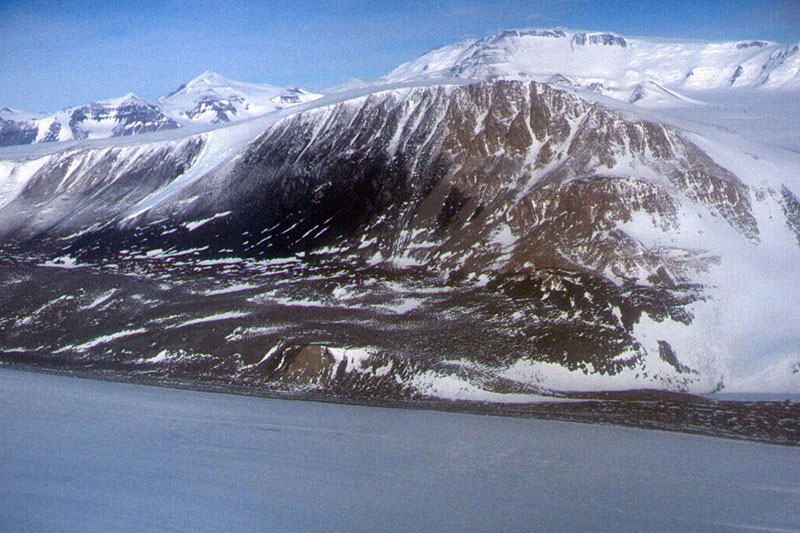 The lower flanks of the peak of Cloudmaker on the western flanks of the Beardmore Glacier reveals a thick sequence of Neogene glacial sediments (the “Sirius Group”), which forms the bench above the glacier surface. Shackleton on his pioneering journey in 1908 towards the South Pole (which he did not quite reach), correctly recognised these deposits as evidence of much older glaciation than was believed at the time. | 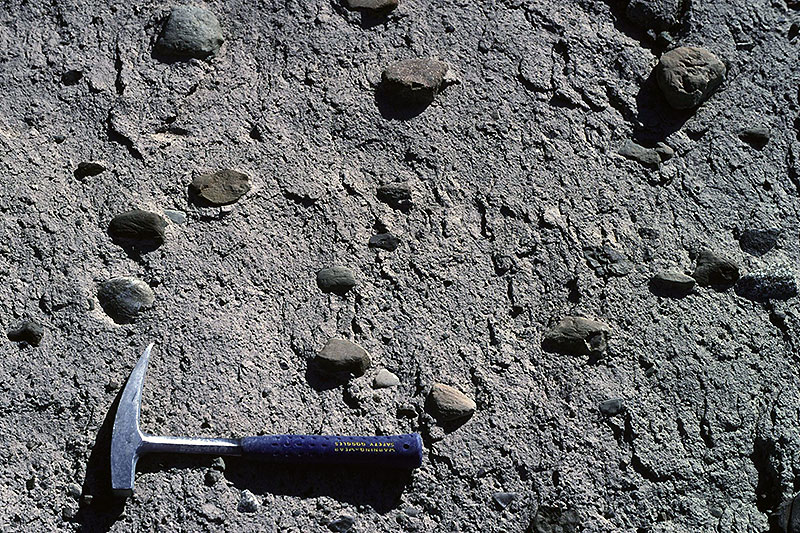 The Cenozoic onshore record is best known from the Sirius Group in the Transantarctic Mountains, although there is considerable controversy as to the age of these sediments. This bedding surface within diamictite on Roberts Massif (85oS) shows strong alignment (parallel to hammer) of striated clasts in a fine matrix,suggesting the sediment was deposited as basal till. |
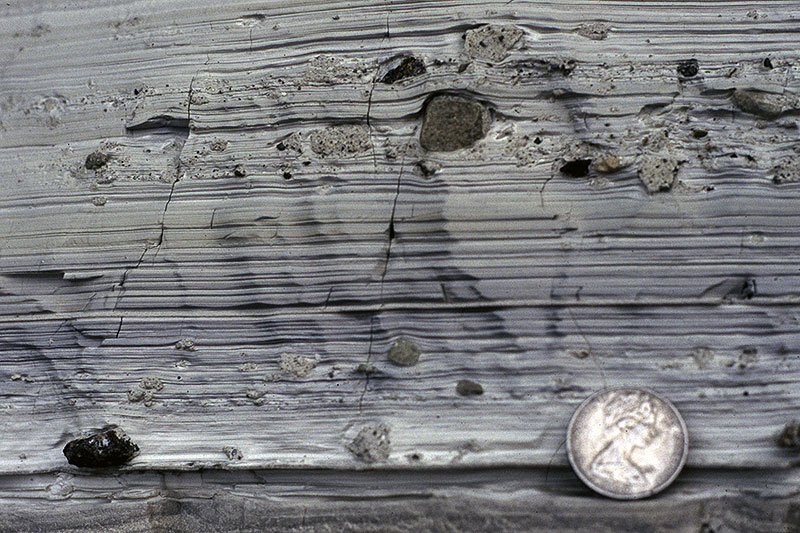 Laminated sand and silt with ice-rafted debris in a glaciolacustrine sequence in the Sirius Group at Bennett Platform, Shackleton Glacier. | 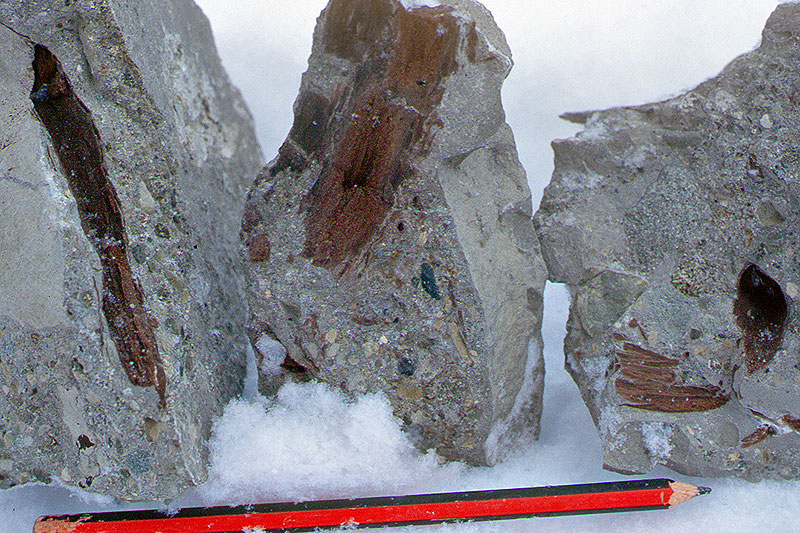 These boulders of Sirius Group, unearthed by Shackleton Glacier and forming a lateral moraine at Bennett Platform, show well-preserved Nothofagus wood fragments. | 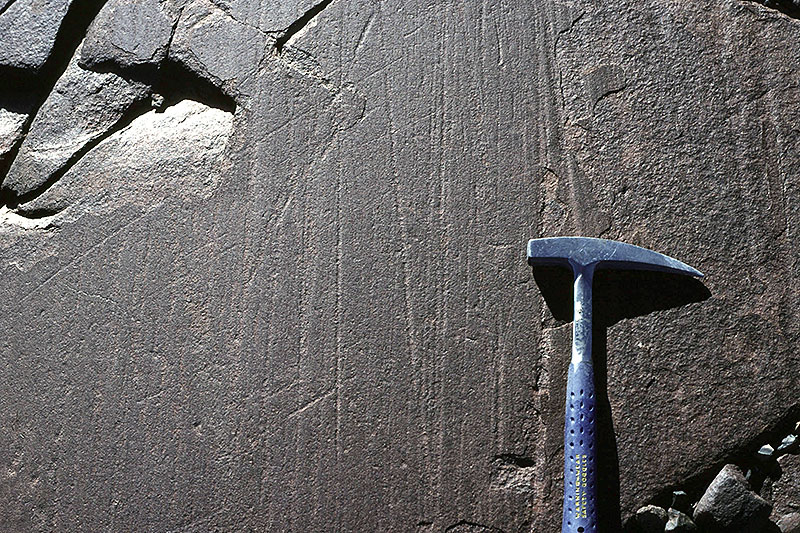 Commonly associated with, and underlying, the Sirius Group is a striated pavement indicative of subglacial erosion. This surface occurs extensively on Roberts Massif at 85°S and is known as the Shackleton Erosion Surface. Note also the crescentic gouge, top left, indicating ice movement from bottom to top. | 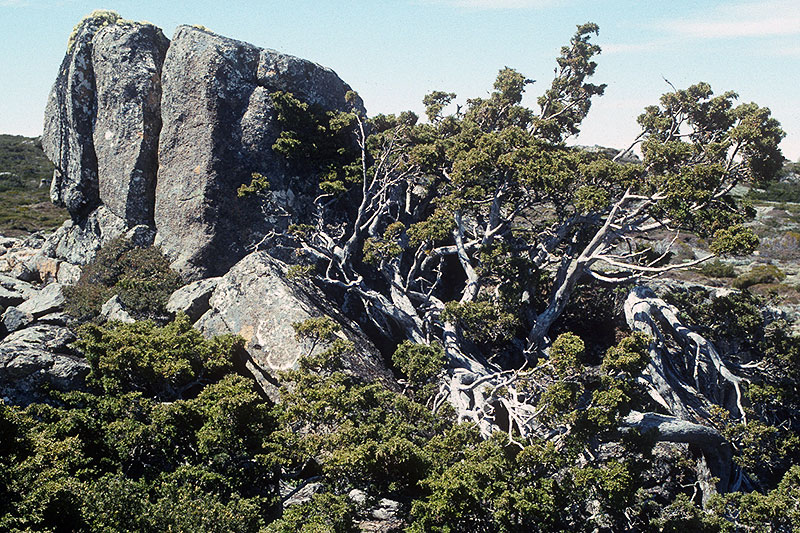 The prone shrubby species of Nothofagus on Mt Wellington, near Hobart,Tasmania resembles the vegetation recorded in association with the Sirius Group in the Trasantarctic Mountains. |
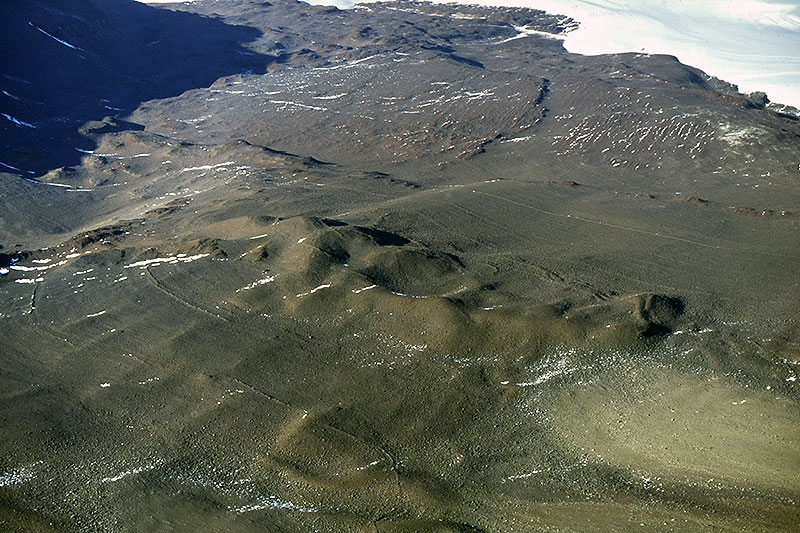 The surface on which the Sirius Group is exposed on Roberts Massif (see light area, lower right) is faulted, disrupting the regularity of former ice-flow patterns.The precise age of faulting is unknown, but probably lasted into Early Quaternary time. Numerous Quaternary ice-marginal moraines, comprising angular debris, are superimposed on this surface. | 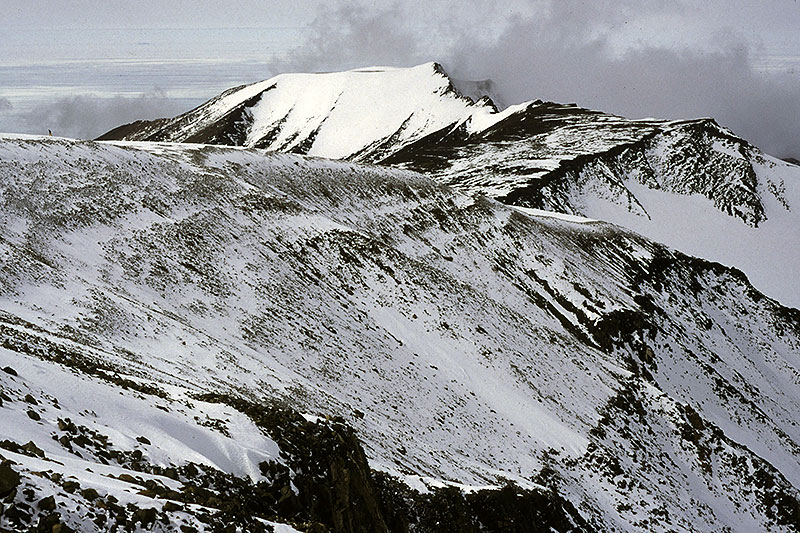 High on Fisher Massif in the northern Prince Charles Mountains (East Antarctica) lies a thick sequence of uplifted glaciomarine sediment known as the Pagodroma Group. The rock rib starting lower left foreground is basement rock, and defines the sedimentary basin that was filled as the ancestral Lambert Glacier lay close to this area. This sequence is of Oligocene age (about 30 Ma). Note the tiny figure on top of the sequence to denote scale. | 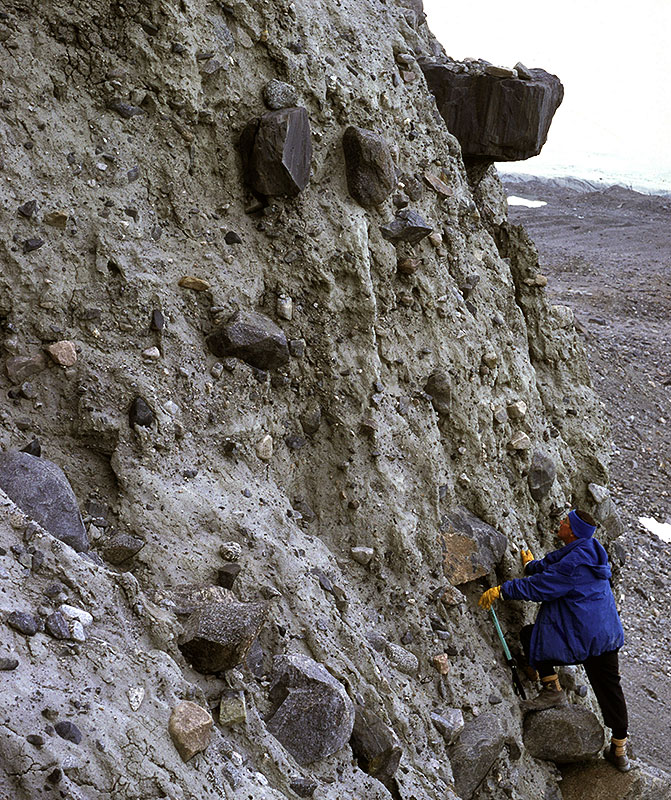 Lower down on Fisher Massif, the well-exposed Pagodroma Group’s texture is clearly evident in this cliff face. This sequence is of Miocene Age (about 20 Ma). Barry McKelvey is examining the exposure. | 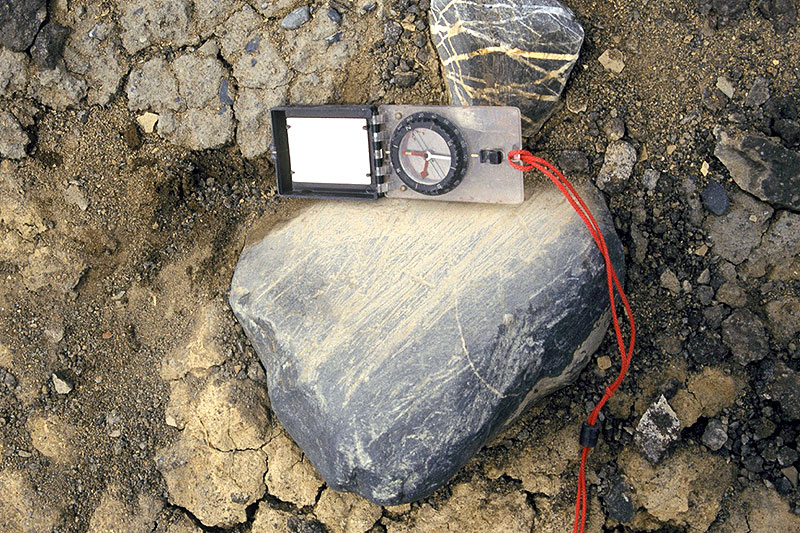 Evidence of Neogene glaciation is preserved at the base and within the James Ross Island Volcanic Group in the Antarctic Peninsula region. This example of poorly sorted sediment (“diamictite”) at Pirrie Col on Vega Island contains a striated boulder that indicates subglacial deposition and transport from an expanded Antarctic Peninsula Ice Sheet to the west. |
| Photos Michael Hambrey |